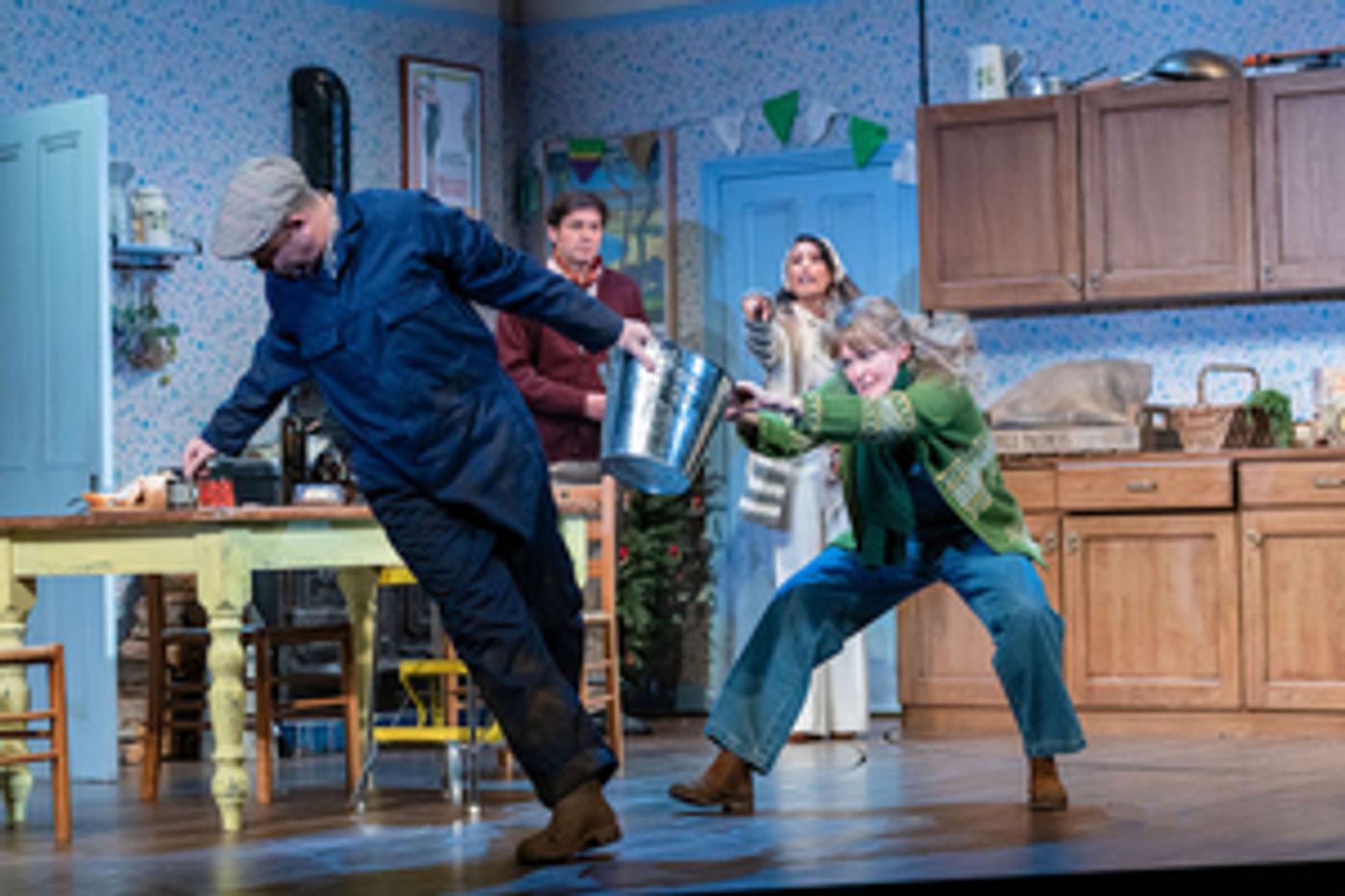Review: THE GOOD LIFE, Theatre Royal Bath
The TV sitcom classic comes to the stage, starring comedian Rufus Hound

![]() Are we returning to the 1970s - the decade that witnessed strikes, power cuts, an energy crisis, three-day week, financial crash, inflation at nearly 30% and three million families living in poverty?
Are we returning to the 1970s - the decade that witnessed strikes, power cuts, an energy crisis, three-day week, financial crash, inflation at nearly 30% and three million families living in poverty?
It certainly appears so with our current fuel and toy shortages, soaring energy prices, lack of lorry drivers and other workers, catastrophic National Health Service, anticipated inflation rate rises and deepening disparity between rich and poor.
Plus, thanks to the pandemic, many of us now want to grow our own food, live simpler lives - and save the planet along the way. While the 70s generation grew mung beans, fashioned macrame plant hangers and kept chickens, the 2020s counterpart nurtures sourdough starter, applauds 'cottage core' (celebration of the purity of the outdoors) on TikTok and rescues chickens - just like Harry and Megan.
So, it couldn't be more timely that the iconic 70s British TV sitcom, The Good Life - attracting 21 million viewers at its peak in 1977 - now comes to theatres. Originally written by John Esmonde and Bob Larbey, and starring Richard Briers, Felicity Kendal, Paul Eddington and Penelope Keith, the stage version kicks off at the Theatre Royal Bath and then tours.
In this adaptation by Jeremy Sams, who also directs, Tom Good (played warmly by Rufus Hound), designer of plastic toys in cereal boxes, has a midlife crisis on his 40th birthday. "We do things we don't like to buy things we don't need," he laments. Tom quits his job and decides he should become totally self-sufficient with his wife Barbara (an appealing Sally Tatum) at their suburban Surbiton home.
To the dismay of neighbours Jerry (enthusiastically portrayed by Dominic Rowan) and Margo Leadbetter (enacted by Preeya Kalidas with superb comic timing), the Goods plough up their gardens to turn them into allotments and install chickens, pigs and a goat named Geraldine (a scene-stealing puppet designed and built by Leigh Cranston, with help from puppet consultant Matthew Forbes).
Chaos ensues. Tom and Barbara shiver in their unheated property, get bored of repetitive omelette and lettuce suppers, and bicker about which one of them allowed Geraldine to escape. Jerry tries to entice Tom back to work and Margo upsets Barbara by offering her designer hand-me-downs.
Sams sticks resolutely to his decision to cement the play in the age of the Austin Allegro, garish wallpaper and outlandish hairdos. Perhaps he could have lent the production more contemporary references, but as a period piece the play generally succeeds. However, a subplot which wouldn't have been allowed in the TV scripts involves Harry the Pigman (played with gusto by Oliver Hewett, who also takes on the roles of Sir, Policeman and Dr Joe) spiking a poppyseed cake with marijuana, leading to slapstick mayhem at the Leadbetters' houseparty and Sir's wife Felicity (given humour and depth by Tessa Churchard) dancing vampishly with Tom.
Set and costume designer Michael Taylor's revolving scenery cleverly captures the contrast between the Goods' blue country-style kitchen - with its inevitable Aga and pine units - and the smarter pink floral wallpaper, expensive dining table and gleaming silver in the Leadbetter household. And he kits out the cast with 70s panache: Margo's wide-legged pantsuit and dangly earrings, Jerry's green velvet jacket and bow tie, Barbara's dungarees and homespun green jumper, and Tom's workaday jeans and cap. It's worth the price of admission alone to see Margo in her sultry, white tennis kit that she hopes will attract coach Pablo at the club.
Sound designer Fergus O'Hare's sitcom-esque music, complete with a pastiche of The Good Life theme tune, keeps the production bubbling along. Lighting by Mark Henderson lends a sunny air and movement director Jane McMurtrie ably choreographs the dance scene at the Leadbetter party and other set-pieces.
For all the cracking comedy lines, which had the audience chuckling away, jokes about busty June at the office felt uncomfortably old-fashioned and tone-deaf post-#MeToo. And some references, such as to TV chef Fanny Cradock and husband Johnnie, might not be understood by younger audiences. But descriptions of period food and drink - black forest gateau, chicken Kiev and Mateus rosé, all making a comeback these days - should hit the mark.
Today's audiences will also relate to the sentiment of rejecting corporate drudgery in favour of new beginnings. A touching and tense scene in the second act, where the cast bands together to revive a newborn ailing piglet, reflects how neighbours helped one another during lockdown. The programme actually predicted the rise of the slow food movement and how people like Tom and Barbara wanted to do their own thing. Now, employees are working from home more and cultivating their own thriving variety of The Good Life.
A feel-good psychedelic 70s trip.
The Good Life at Theatre Royal Bath until 16 October, then continues on tour; thegoodlifeonstage.com
Photo credit: Dan Tsantilis
Reader Reviews
Videos

